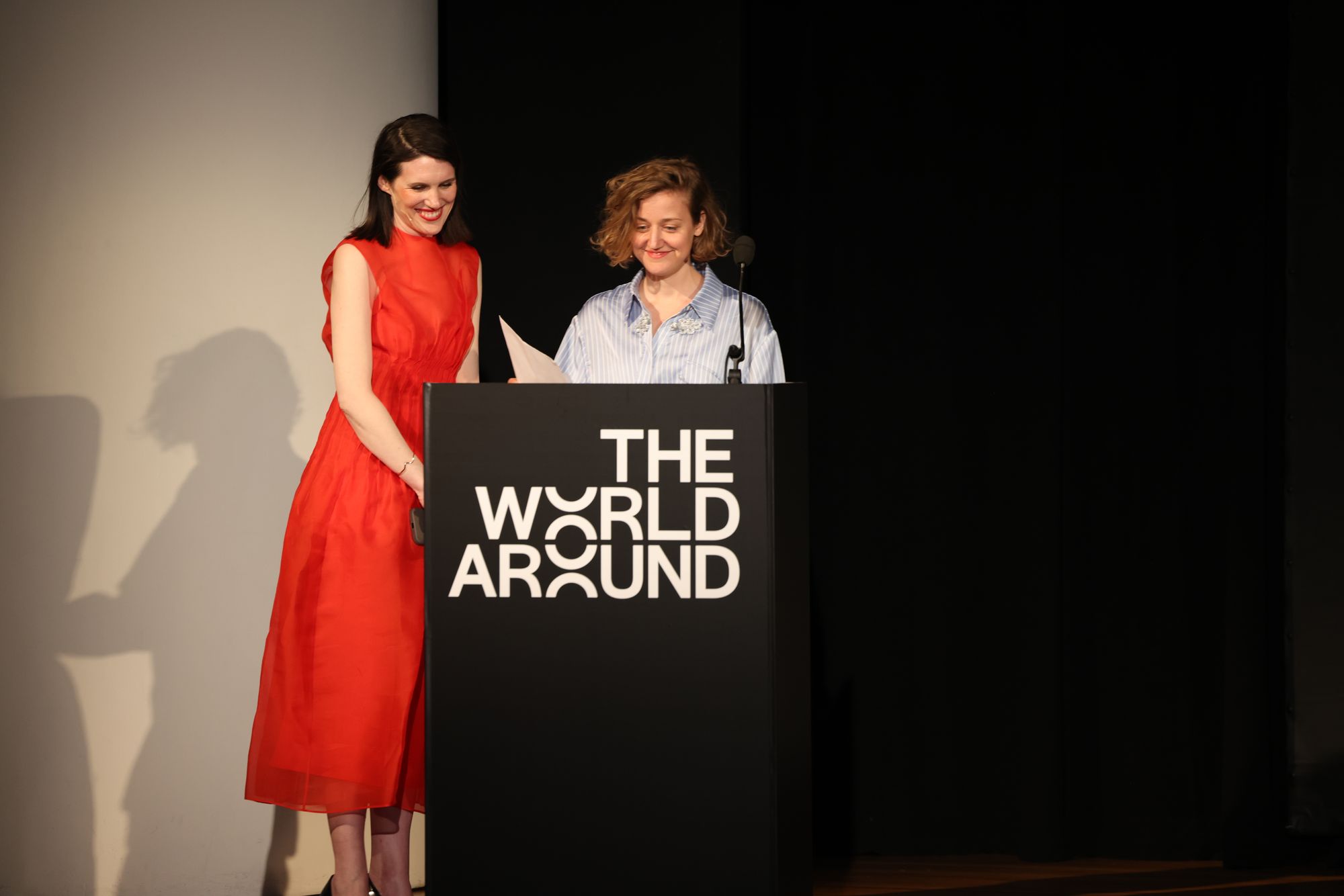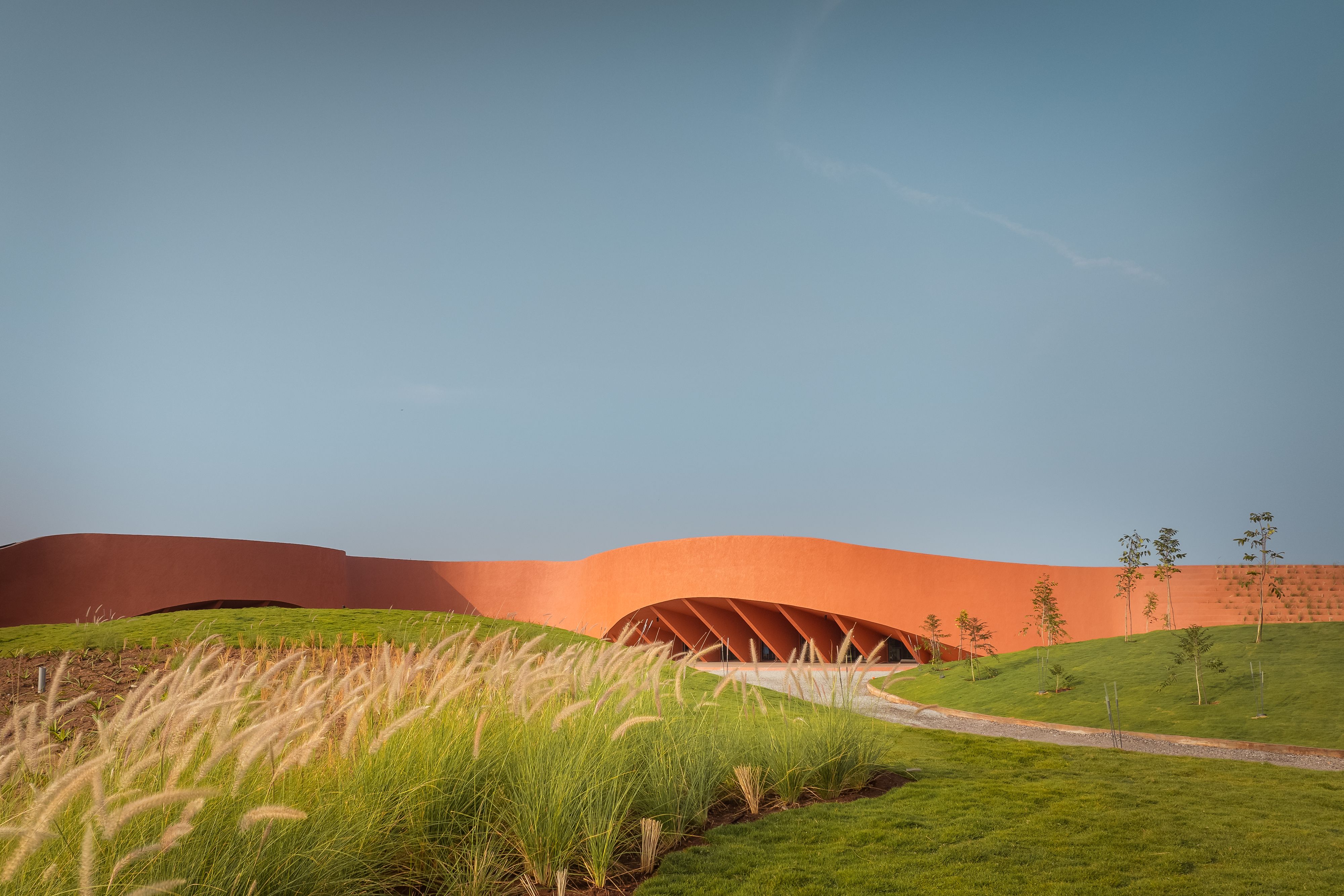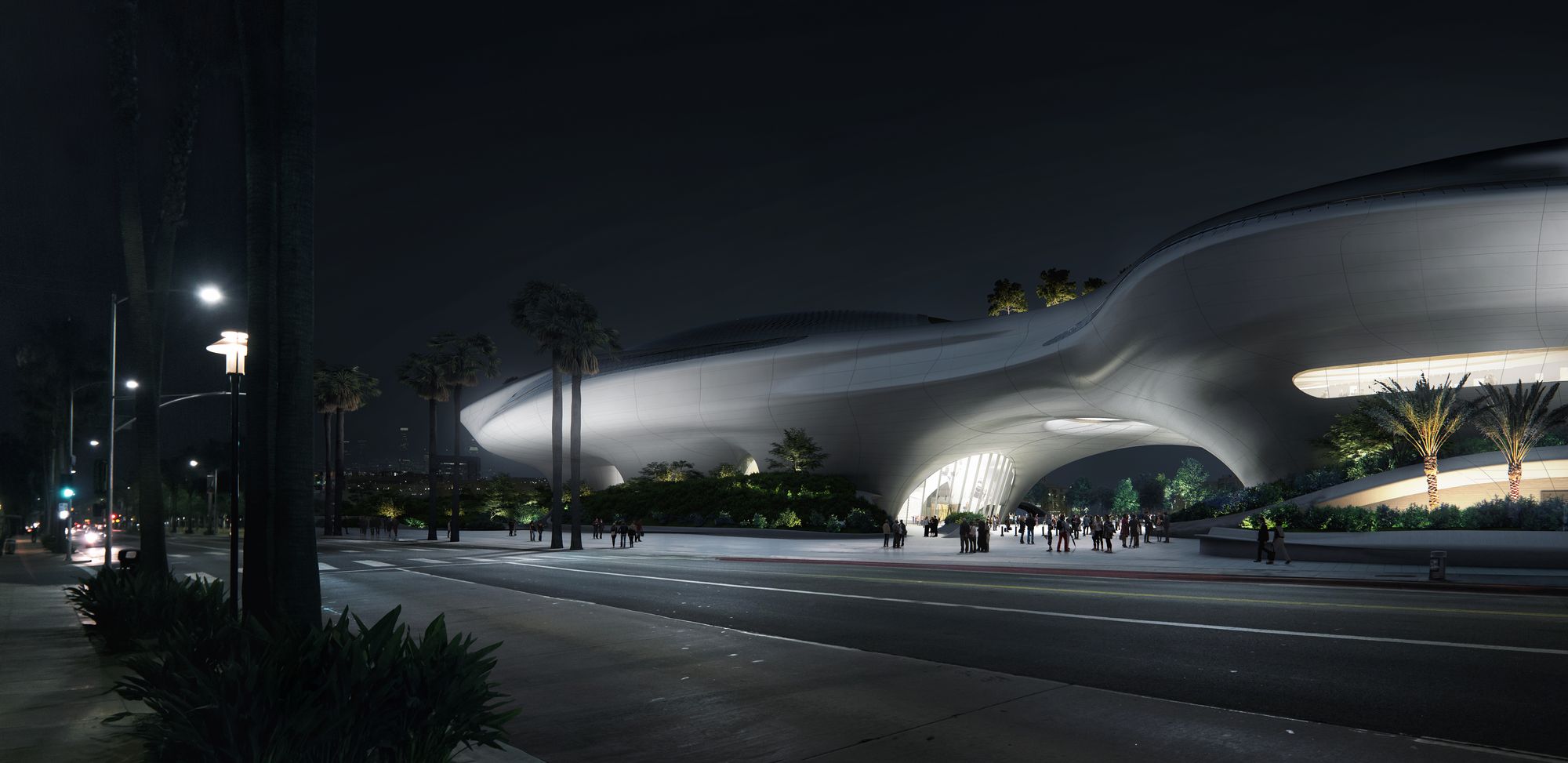
SUB’s design for the Balenciaga New Bond Street store in London, with an exposed concrete interior that stands out like an abandoned relic amongst the other luxury shops on the street. Photo by Annik Wetter courtesy of SUB.

Alex Sablone’s Sun Seed, a multi-use, large-scale sculpture in Richmond, Virginia that incorporates elements of a traditional skatepark that will “serve as a meeting place and gathering space that can be shared by both skateboarders and the broader community.” Photo courtesy of Alexis Sablone.
When Beatrice Galilee started The World Around five years ago, she had an idea and a name she could no longer use: “In Our Time: A Year of Architecture in a Day.” The name belonged to the Metropolitan Museum of Art, where she had just left her position as the very first architecture curator; under the auspices of the Met, Galilee helped to create the day-long conference in 2016 devoted to exploring “outstanding architectural and design achievements of the past year,” with presentations by architects, designers, artist, and photographers. After her departure in 2019, and with the Met no longer continuing the conference, Galilee transferred that convocation’s spirit to a new venture: The World Around Summit.
The World Around, or TWA in short, kicked off at the Renzo Piano-designed Times Center in January 2020 with a shiny new identity courtesy of 2x4 and a stellar roster of over 20 speakers, including Shohei Shigematsu, Xu Tiantian, and Paola Antonelli. “We wanted to create a truly interdisciplinary perspective on the topics and issues of the day, but seen through the lens of architecture,” Galilee tells PIN–UP. “If you’re talking about social justice, you’re talking about architecture. If you’re talking about redlining, you’re talking about architecture. Ecology, construction, the Anthropocene — you’re talking about architecture.” British curator Shumon Basar spoke about Age of You, the 2019 exhibition at MOCA Toronto that captured the unstable sense of individuality that defines our dizzying modern technological age (itself a preview of the novel he later co-wrote with Douglas Coupland and Hans Ulrich Obrist). He had just flown in from Dubai and nervously shared his anxiety over the growing news about Coronavirus. One month later, the world — and The World Around with it — largely shut down. “It was a real moment of reckoning, but I think the initial idea was just to keep talking — let’s use the platform we’ve already built and the momentum of this new organization to be responsive.”

SUB’s design for the Balenciaga New Bond Street store in London, with an exposed concrete interior that stands out like an abandoned relic amongst the other luxury shops on the street. Photo by Annik Wetter courtesy of SUB.

Modular panels made from mycelium at Mae-Ling Lokko’s Grounds for Return, a series of installations at Hasselt, Belgium gallery Z33 that explore agricultural waste and cycles of renewal. Photo by Selma Gurbuz courtesy of Mae-Ling Lokko.

Beatrice Galilee and Fondation Cartier’s Béatrice Grenier at the World Around Summit 2024. Photo by Enid Alvarez courtesy of the Solomon R. Guggenheim Museum.

Jakob Kudsk Steensen’s The Ephemeral Lake, 2024, an immersive, multi-sensory digital installation that examines the accumulation of water in arid desert landscapes in response to the 250th anniversary of the birth of Caspar David Friedrich (1774–1840). Live simulation (still). Commissioned by the Hamburger Kunsthalle. Photo courtesy of the artist.

The 2024 World Around Summit at the Guggenheim. Photo by Enid Alvarez courtesy of the Solomon R. Guggenheim Museum.
Though it may seem contradictory, the global shutdown bolstered The World Around’s growth. In the fall of 2020, with the pandemic in full swing, Galilee poured all her focus into expanding the scope of The World Around Summit, starting to fundraise and gather a board of architecture luminaries, including Elizabeth Diller and Vishaan Chakrabarti, to inaugurate a full-scale non-profit organization. The World Around non-profit advances the summit’s goals — to share the work of architecture and designers advocating for a more progressive world — while broadening its reach via initiatives such as The World Around In Focus and The Young Climate Prize. The former is an initiative that brings traveling programs based on themes, such as “Precarity” and “Land,” to different places around the world with the support of partner venues, including The Guggenheim (2021), the Nieuwe Instituut in Rotterdam (2022), the Triennale Milano (2023), co-presented with Fondation Cartier (who became a Global Cultural Partner of TWA that same year), and the Design Museum in London (2024). The latter — The Young Climate Prize — connects 25 practitioners under the age of 25 selected from a worldwide open call with “a bespoke, curated academy of talks, workshops, and one-on-one mentorship” on a biannual cycle, with three winners selected by a jury presenting their work at the annual World Around Summit in New York City. “There is a generation of designers and architects who were born into the climate crisis, and their worldview is radically different from mine,” Galilee says. “The agency of design and architecture, in their minds, is something that’s quite reparative — they’re really considered and very concerned about the role of architecture and design for the future.”

SO–IL’s 450 Warren, which proposes a new model of apartment housing through living areas that radically blend private indoor and communal outdoor spaces. Photo by Iwan Baan courtesy of SO–IL.

Breathing Sea Wall in Haikou Jiangdong Coastal Park “transforms a solid concrete sea wall and a desolate fish farm into a verdant, resilient public area.” Image courtesy of Turenscape.

sP+A’s Hampi Art Labs, 2023. Architect Sameep Padora drew inspiration from the historical significance of the site’s surroundings, formerly home to the medieval Hindu empire of Vijayanagara, for the environmentally integrated design of the new arts center. Photo courtesy JSW Foundation.

The upcoming design of the Lucas Museum of Narrative Art by MAD Architects, which “explores the relationship between nature and the urban environment,” inspired by the work of Frank Lloyd Wright and Mies van der Rohe. Photo courtesy of MAD Architects.

B-arn-S’s first major architectural commission, a Community Services Center, in Opa-Locka, Florida that formalized “the small-scale, home-based, underground economy that already existed, like backyard BBQ restaurants, hair salons operating out of kitchens, and bike repair shops operating from front porches.” Photo courtesy of B-arn-S.
In partnership with the venerable Solomon Guggenheim Museum in New York, the latest edition of TWA took place last month with 16 speakers with projects in over ten countries. Among the highlights: Sandra Jackson-Dumont, the director and CEO of the future Lucas Museum of Narrative Art, and its architect MAD Architects’ Ma Yansong presented the plans for the forthcoming 300,000 square-foot building to the public for the first time; Emanuele Coccia presented ideas from his latest book Philosophy of the Home: Domestic Space and Happiness, which calls for the architecture of our apartments and homes to reflect our evolving social contexts and particularities; and designer Alexis Sablone on exploring the middle ground between architecture and skateboarding.
As with everything, the dark cloud of ongoing conflict, war, and destruction hangs over the world of architecture, perhaps even more so than other industries. But adaptability in the face of political upheaval is an intrinsic part of TWA’s DNA. “For our conference on ‘Precarity,’ we had Rebuild Ukraine speaking from Kyiv about the architects and master planners gathering to work on a plan for rebuilding Ukraine during the time of its destruction. Architects also talked about reconstruction after earthquakes and climate change events, and Eyal Weizman spoke in London about Forensic Architecture and what he’s been seeing on the ground,” Galilee says. “Absorbing what’s going on in the world is very much baked into my approach.” No matter what happens between now and the next conference — The World Around is poised to take it on.